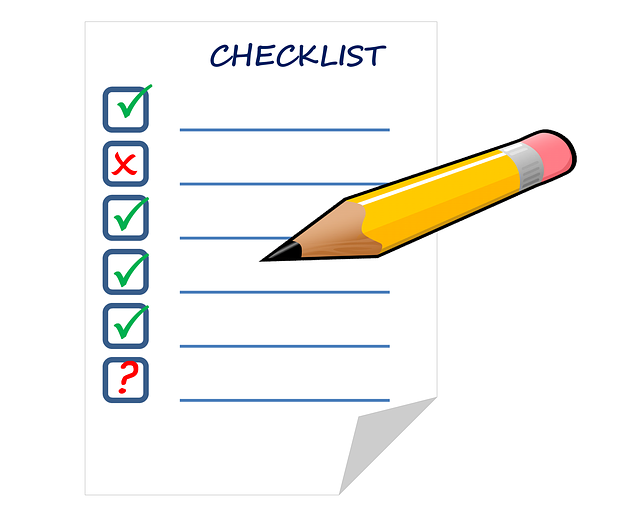Partnerships between businesses can create synergies, unlocking potential for growth and new opportunities. When such alliances occur, it’s crucial to let the world know. A well-crafted partnership press release serves as a vehicle to announce your exciting news to the public, shareholders, and potential investors.
This comprehensive partnership press release and partnership announcements guide will walk you through how to write an effective partnership announcement press release that will grab attention and generate buzz.

Table of Contents
Understanding the Nature of Partnership Announcements
Partnership announcements are commonly seen across various sectors ranging from pharmaceuticals, software companies to even businesses of different niches joining forces for a mutual goal. Whether it’s a merger, acquisition, strategic alliance, or collaboration for a specific project, these alliances offer exciting opportunities for businesses to grow, diversify, and capture new markets.
When a lesser-known brand partners with a renowned company, the partnership announcement serves as a powerful tool to boost the smaller brand’s visibility and the partner brand credibility. Even among Fortune 500 companies, strategic alliances have become a norm, leading to innovative products, services, and solutions.
Key Elements of a Partnership Press Release
1. Engaging Headline
The headline is the first point of contact with your audience. It should be catchy, concise, and clear. Make sure to include the names of both companies involved in the advertising partnership. The company with higher brand recognition or the one initiating the partnership usually takes the first mention.
Next, pinpoint the key details about the partnership. This might include the mission of the partnership, its duration, and the key roles each partner will play. Incorporate a brief overview of what each company brings to the table, highlighting their specific skills, resources, or capabilities.
Emphasize the expected benefits of the partnership. This could be in terms of market expansion, increased revenue, better customer service, technological advancements, or other specific outcomes that are anticipated.
Additionally, provide a realistic timeline for the partnership’s implementation. This will give your audience a clear understanding of when to expect results. It’s essential to manage expectations correctly to maintain trust and credibility with your audience.
Finally, make a note of the synergy between the two companies. Discuss how their combined efforts are expected to disrupt the market, initiate changes, and align with industry trends. This will create anticipation for the impact of the partnership and underscore its significance in the industry. Remember, the goal is to tell a compelling story about a partnership that promises to revolutionize the market. Here’s an example:
“Major Tech Player and Strong Startup Innovate Announce Strategic Alliance to Revolutionize AI Technology”
2. The 5 Ws in the First Paragraph
The first paragraph of any partnership press release, news story, or article is crucial to capturing the reader’s attention and providing an overall context for the rest of the piece. This is where the 5 Ws – Who, What, When, Where, and Why – come into play. When answered effectively, these questions can provide a comprehensive overview of the information to follow, setting the stage for a compelling narrative.
Who
The “Who” refers to the parties involved in the event or story. This can be a person, a group, or an organization. In the context of a partnership press release, this would typically refer to the company or companies involved in the announcement. This helps the reader understand the actors in the story and their potential relevance to their interests.
What
The “What” describes the event or the action that has taken place. It gives the reader a clear understanding of the subject matter of the press release, be it a new product launch, a corporate partnership, a significant hire, or any other newsworthy event. Providing a clear “what” ensures the reader understands the core message immediately.
When
The “When” provides the timeline or the effective date of the event or action. This might refer to the date a product is launched, a partnership is formed, or any other significant date. It’s an essential element to help set the context of the event and can also help the reader understand its urgency or relevance.
Where
The “Where” specifies the geographical location or relevance of the event. This could be the city where a product is launched, the countries where a partnership is formed, or any other place that’s significant to the event. This helps the reader to understand the geographical impact of the announcement.
Why
The “Why” explains the importance or the implications of the event. This should answer the question of why the reader should care about this news. It could highlight the benefits of a new product, the impact of a partnership, or any other reasons that make the event newsworthy. The “why” is arguably the most crucial of the 5 Ws as it gives the story a purpose and drives the narrative forward.
To sum up, the 5 Ws provide a fundamental framework for effectively conveying information in the first paragraph of a press release. By answering these questions, you can ensure that your content is clear, concise, and compelling, providing your reader with all the necessary information right at the beginning.
3. Detailed Explanation
The following sections of the partnership press release should further explore the intricacies of the partnership, painting a vivid picture of its intricacies and potential effects. This part of the press release is where you outline the unique selling point of the partnership.
What makes this alliance stand out from others? Is it a first-of-its-kind initiative, strategic partnerships or does it bring together two titan companies in a unique way?
The benefits to consumers should be highlighted explicitly. Will it lead to better prices, superior quality, more variety, or enhanced services? This is your chance to directly communicate with your consumers and illustrate the advantages they stand to gain from this partnership.
Furthermore, you should mention the industries the partnership will impact. Will it lead to advancements in technology, healthcare, finance, or any other sector? This helps to position the partnership within a broader economic and social context, demonstrating its relevance and importance.
4. Quotations from Key Stakeholders
Incorporate quotes from key stakeholders, such as CEOs or top management of both companies. These statements should reflect their enthusiasm and optimism about the partnership, its potential impact, and benefits for both companies.
Moreover, the quotes can also highlight the shared vision and goals exactly the same caliber that led to the formation of the partnership. These insights can put a personal touch on the partnership press release, showing the human side behind the corporate decision.
Furthermore, they can discuss the expected challenges and how the partnership plans to overcome them, reinforcing the commitment and resilience of ongoing partnership between both parties.
Quotations can also enhance the credibility of the partnership press release, making it more compelling to the readers. Including such quotes adds depth to the narrative, making the press release more than just an announcement, turning it into a story of collaboration.
5. Market Impact and Industry Relevance
Provide a brief overview of the current state of the industry and how your partnership can influence it. This context will help the audience understand the significance of your alliance and its potential impact on the industry.
Elaborate on the specific changes your collaboration could initiate. Discuss how this partnership can lead to innovation, streamline processes, or bring about cost efficiencies. Highlight the potential for market disruption, if any. Additionally, consider addressing how this alliance aligns with the industry’s evolving trends and consumer needs.
The partnership’s relevance to industry growth and competitiveness can further underline its importance. Finally, envisage how this collaboration could potentially shape the industry’s future, fostering new opportunities and setting new benchmarks. This added perspective can make the alliance more relatable to industry insiders, consumers, and investors alike.
What is a Co Branding Partnership and Campaign exactly?
A co-branding campaign is a strategic marketing maneuver that involves the collaboration of two or more brands to create a unique product or service, bearing the identities of all participating brands. This strategy is a subset of partnership marketing, where companies join forces to leverage each other’s strengths and penetrate new markets.
The primary objective of a co-branding campaign is to combine the unique selling propositions and brand equity of various brands created by different companies to create a product or service that appeals to a wider customer base. It’s about enhancing the value proposition by merging the strengths of different brands, thus increasing customer appeal and boosting revenue.
Co-branding is typically initiated through a partnership, merger, or acquisition, and companies must carefully consider their co-branding partners to avoid potential risks. For example, a luxury brand partnering with a low-cost brand might dilute its brand value. Therefore, finding the right partner that aligns with your brand’s values and target audience is crucial to a co branding move.
There are four primary strategies employed in co-branding – market penetration, global brand, brand reinforcement, and brand extension. Market penetration is about reaching a larger customer base, while global branding is about establishing a brand presence in international markets. Brand reinforcement aims to strengthen the brand’s reputation, and brand extension is about diversifying the brand positioning product or service offering.
Co-branding is distinct from co-marketing, which aligns marketing strategies but doesn’t result in a new product or service. A successful example of co-branding is the partnership between Citi and American Airlines to create the Citi AAdvantage cards. Another example is the collaboration between Toyota and electric vehicle technology companies to create the Toyota Prius.
In a nutshell, a co-branding campaign is a powerful tool for businesses to enhance their market reach, diversify their offerings, and bring innovative products and services to their customers. It’s about leveraging synergies and creating a win-win situation for all partners involved in an ongoing campaign.
6. Conclusion and Contact Information
Conclude with any additional details about the partnership, like the timeline for any media outlets or upcoming product or service launch. Don’t forget to include contact information for press inquiries. Best of luck with your co branding campaign!



